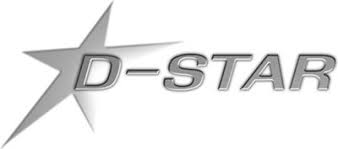D-Star – Digital Voice
By: Chip Andrews, KL7CA
March 8, 2021
For those of you who regularly participate in the South Central Simplex Net, held every Wednesday evening at 2000L (AST), you may have noticed a new segment added to the VHF/UHF portion of the Net. We now have Digital Voice (DV) segments on both VHF/UHF along with the usual FM and USB modes. This segment was added to take advantage of the new D-Star capable radios available today.
So, what is D-Star? D-Star is a digital voice and data protocol that was developed by the Japan Amateur Radio League back in the late 1990s. It utilizes a minimum shift keying in its packet-based standard. D-Star was the first digital mode designed specifically for amateur radio. Since then, other popular digital modes have emerged in amateur radio including DMR and Yaesu System Fusion. There are several D-Star capable radios on the market that offer HF, VHF, UHF, and microwave amateur radio bands. For the purpose of this article, I am just going to cover using DV Simplex as another mode of communication here in South Central Alaska.
Why use Digital Voice? The digital voice modes use less bandwidth than the older analog modes such as AM and FM. The quality of the DV data received is better than an analog signal at the same signal strength. For comparison, analog FM signals progressively degrade the further away you get from the transmitting station. Digital Voice signals maintain a constant voice quality right up to the point you have surpassed the range of the transmitting station. Another interesting aspect of using digital voice is that you can send data (call sign, GPS location, messages) at the same time you are transmitting. D-Star can also be used to send pictures and text messages (like APRS.). D-Star also has a worldwide system of Repeaters and Reflectors that allow Technician Class operators to talk all over the world using the D-Star system. However, this feature of linked Repeaters and Reflectors utilizes the Internet to function and if there is a “grid down” situation, it is no longer available. However, using the DV mode for local VHF/UHF and HF is always available.
ICOM is the dominant producer for D-Star featured radios with the IC-9700, IC-7100, IC-2820, ID-4100A, and ID-5100A base station/mobile radios and the ID-51 Plus, ID-51A, ID-31A, ID-52A, and the new IC-705 all mode, all band portable radio that has recently been released. Kenwood also produced the TH-D74 handheld that takes full advantage of D-Star capabilities and APRS.
If you own any of the above-listed radios, you have a radio capable of participating in the VHF/UHF Digital Voice Segment of the South Central Simplex Net. As a side note, I owned my IC-7100 for well over a year before I understood what D-Star was and its capabilities. Since then, I have regularly used the DV mode to chat with local friends who also have D-Star radios. With the growing popularity of the IC-9700 and the IC-705, I suspect the number of D-Star users will continue to grow.
During the South Central Simplex Net, the frequencies used for Digital Voice are VHF – 145.670 DV and UHF – 441.000 DV. For setting up your specific radio to operate in the DV mode, please refer to your Owner’s Manual. There are also numerous Ham Radio YouTube channels that explain how to use D-Star on almost every model of radio listed above. As the Net Control Station for the Digital Voice segment, I am looking forward to having more stations join us! If you are interested in learning more about D-Star and all its capabilities, you can go to www.dstarinfo.com and browse through all the various pages explaining all the different modes and capabilities of the D-Star system.
73,
Chip Andrews
KL7CA

